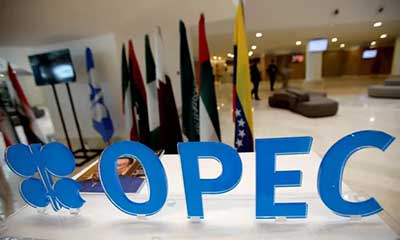Date: 06/04/2023
Relevance: GS-2: Bilateral, Regional and Global Groupings and Agreements involving India and/or affecting India’s interests.
Key Phrases: Organization of the Petroleum Exporting Countries (OPEC), West Asia, Natural resources rich area, International Energy Agency (IEA), Secure and Stable, Crude Oil Price, Ukraine war, Indian Ocean region, Current Account Deficit.
Context:
- Recently, Saudi Arabia and other OPEC+ members have announced
voluntary cuts to their oil production of about 1.15m barrels a day in a
surprise move aimed at supporting market stability.
- Facing sluggish demand, Saudi Arabia will effect a voluntary reduction of 500,000 barrels per day (bpd), Iraq 211,000 bpd, United Arab Emirates 144,000 bpd, Kuwait 128,000 bpd, Algeria 48,000 bpd, Oman 40,000 bpd, Kazakhstan 78,000 bpd, and Gabon 8,000 bpd.
Why was the cut in output announced?
- As per the OPEC, the cuts are a precautionary measure aimed at supporting the stability of oil markets.
- Analysts said the cuts are intended to mitigate the impact of a
sluggish global economy and the banking crisis in the US on crude oil
prices.
- These had weakened crude oil prices significantly ($67-68/barrel).
What will be the impact of this cut on crude oil prices?
- Analysts say right now there is no issue with supplies.
- Global crude oil production averaged at 100 million bpd in 2022 and is expected to hit 101.5-102 million bpd in 2023, while oil supply stood at 101.5 million bpd in February 2023.
- Global refinery throughput is at around 81.5 million bpd.
- As per the oil market report of the International Energy Agency (IEA),
a 52.9million barrel surge in global inventories in January 2023 lifted
known stocks to nearly 7.8 billion barrels, their highest level since
September 2021 and preliminary indicators for February 2023 suggesting
further build-up.
- Despite solid Asian demand growth, the market has been in surplus for three straight quarters.
- After the crude oil exporting cartel announced production cuts, the
global benchmark Brent rose by more than 5 per cent to hit $84.13 per barrel,
one of the sharpest price rises in the past 10-11 months.
- For comparison, after the Silicon Valley Bank crash in the US (March), crude oil prices fell as low as $67 a barrel.
- Analysts predict a crude oil price of $95-100 per barrel by December 2023 and Q1 2024.
- Analysts have warned that the cuts would impact prices thereby further exacerbating inflationary pressures on the global economy.
Organization of the Petroleum Exporting Countries (OPEC)
- It is an organization enabling the co-operation of leading oil-producing countries, in order to collectively influence the global market and maximize profit.
- Founded on 14 September 1960 and has been headquartered in Vienna (Austria), although Austria is not an OPEC member state.
- The 13 member countries accounted for an estimated 44 percent of global oil production and 81.5 percent of the world's proven oil reserves, giving OPEC a major influence on global oil prices.
- The OPEC Conference is the supreme authority of the organization, and consists of delegations normally headed by the oil ministers of member countries.
- OPEC has 13 member countries (Algeria, Angola, Equatorial
Guinea, Gabon, Iran, Iraq, Kuwait, Libya, Nigeria, the Republic of the
Congo, Saudi Arabia, the United Arab Emirates and Venezuela): five in
the Middle East (Western Asia), seven in Africa, and one in South
America.
- Ecuador, Indonesia and Qatar are former OPEC members.
- Approval of a new member country requires agreement by
three-quarters of OPEC's existing members, including all five of the
founders.
- In October 2015, Sudan formally submitted an application to join, but it is not yet a member.
- OPEC+
- A number of non-OPEC member countries also participate in the organization's initiatives such as voluntary supply cuts in order to further bind policy objectives between OPEC and non-OPEC members.
- This loose grouping of countries, known as OPEC+, includes Azerbaijan, Bahrain, Brunei, Kazakhstan, Malaysia, Mexico, Oman, Russia, South Sudan and Sudan.
How does this cut and increase in crude oil price impact the rupee and the current account deficit?
- For India, this would mean higher oil import bills and this could
stoke inflation if the government resumes the daily retail auto fuel
price revision mechanism.
- If the government continues to freeze retail prices, then the oil marketing companies will again witness huge under recoveries.
- Since India imports more than three-fourths of its crude requirement, higher prices will push the import bill, which means more demand for the dollar and that will widen the current account deficit and weaken the rupee.
Way Forward:
- The apprehension is that if crude prices continue going northward, then
prices of petrol and diesel could go up as governments (Central and
States) have limited room available for duty cuts.
- Unseasonal rain is also posing a new risk to food inflation, and fuel price rise might further food as well as headline inflation.
Source: The Hindu BL
Mains Question:
Q. What can be the impact of OPEC+ sudden output cut on crude oil prices and current account deficit of India? (250 Words).









